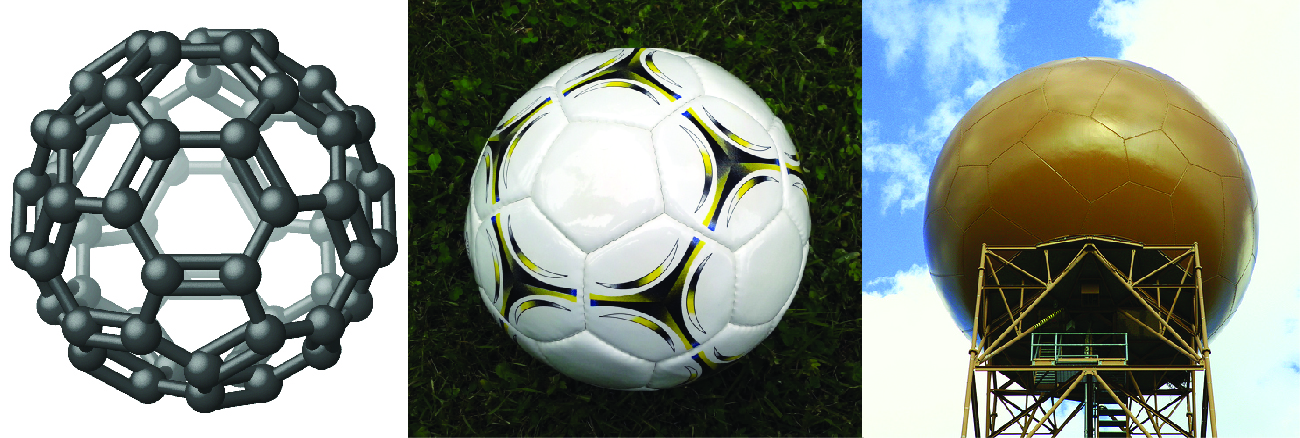37 Introduction
Chapter Outline
7.1 Ionic Bonding
7.2 Covalent Bonding
7.3 Lewis Symbols and Structures
7.4 Formal Charges and Resonance
7.5 Strengths of Ionic and Covalent Bonds
7.6 Molecular Structure and Polarity

It has long been known that pure carbon occurs in different forms (allotropes) including graphite and diamonds. But it was not until 1985 that a new form of carbon was recognized: buckminsterfullerene. This molecule was named after the architect and inventor R. Buckminster Fuller (1895–1983), whose signature architectural design was the geodesic dome, characterized by a lattice shell structure supporting a spherical surface. Experimental evidence revealed the formula, C60, and then scientists determined how 60 carbon atoms could form one symmetric, stable molecule. They were guided by bonding theory—the topic of this chapter—which explains how individual atoms connect to form more complex structures.
Idea Explorations
This resource adds depth to the topic by offering perspectives or examples not covered in the core materials.
Instructions:
- Access the link by selecting the URL below. If you encounter any accessibility issues, please let your instructor or support team know so alternative formats can be provided.
- Read or explore the content at your own pace. You are not required to memorize details but reflect on how the main idea connects to the chapter themes.
Link: UWinnipeg Chemistry student Michael Wiebe earns Campus Sustainability Recognition Award

